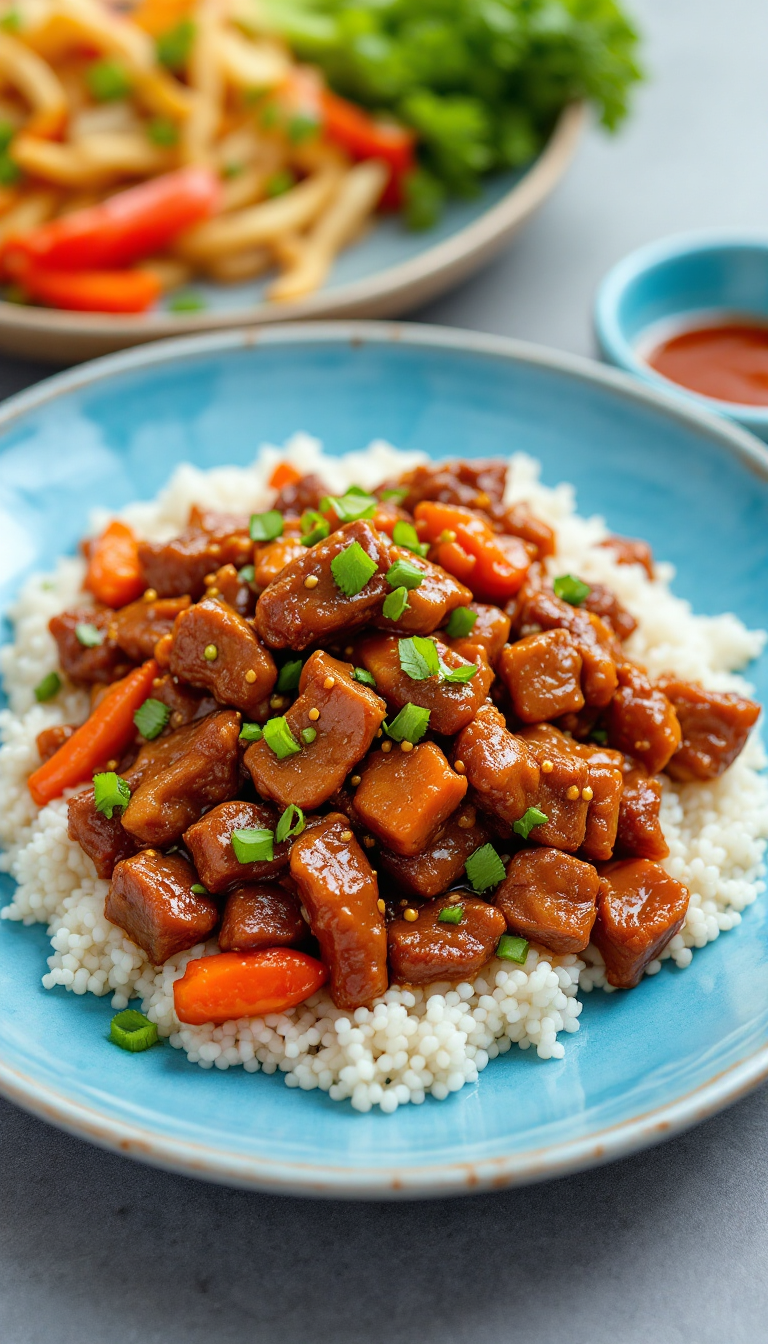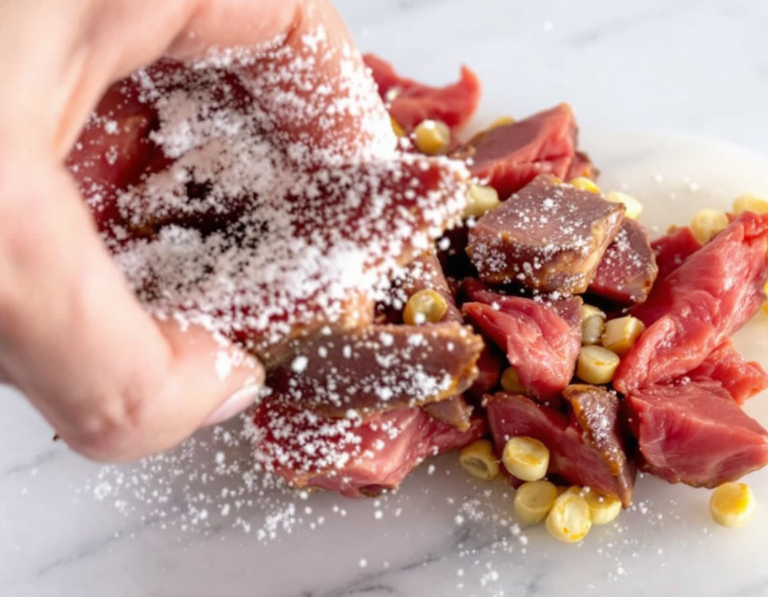
Ah, Mongolian beef—a dish that teases the senses and demands attention with its sticky, tangy allure. I remember the first time I tried it at a bustling street market, the aroma wafting through the chilly evening air. It’s like a warm hug on a plate, a fusion of flavors that seems both familiar and exotic, and if you’ve ever found yourself craving something that’s simultaneously sweet and savory—this might just be your culinary soulmate.
Steps
- Slice the beef thinly and marinate it by mixing with soy sauce, cornstarch, and vegetable oil. Allow it to marinate for at least 10 minutes or overnight for better flavor.
- Prepare the sauce by combining cornstarch with a small amount of water, then mix in soy sauce, chicken broth, cooking wine, and brown sugar until smooth.
- Lightly coat the marinated beef slices with cornstarch using your fingers.
- Heat oil in a wok over medium-high heat, and fry half the beef until golden and crispy, turning once. Remove and drain on paper towels, then repeat with the remaining beef.
- Discard excess oil from the wok, leaving about a tablespoon. Quickly sauté minced ginger and crushed garlic for about 15 seconds, being careful not to burn them.
- Add the prepared sauce to the wok, bring it to a simmer, and cook until it thickens into a glossy consistency.
- Return the crispy beef to the wok, add scallions, and toss everything together to coat the beef well. Cook for an additional 30 seconds.
- Serve the Mongolian Beef immediately with rice or a low-carb alternative like cauliflower rice.

Ingredients
- 8 oz / 250g beef steak (rump, scotch, or flank), sliced into 1/5″ / 3mm slices
- 1 tsp soy sauce
- 1 tsp cornstarch/cornflour
- 1 tsp vegetable oil
- 2 tsp cornstarch/cornflour
- 1/4 cup water
- 2 tbsp soy sauce (light or all-purpose)
- 1/4 cup chicken broth
- 1 1/2 tbsp Chinese cooking wine or dry sherry, or more chicken broth
- 3 tbsp / 1/4 cup brown sugar, lightly packed
- 1/4 – 1 1/2 cups vegetable oil
- 1/4 cup cornstarch/cornflour
- 1/2 tsp ginger, finely minced
- 2 garlic cloves, crushed
- 2 scallions/shallots, cut into 1 1/2″ / 4cm pieces on the diagonal
Nutritional Values
Calories: 1113 | Protein: 59g | Carbohydrates: 87g | Fat: 60g | Saturated Fat: N/A | Cholesterol: N/A | Sodium: 2500mg | Fiber: 3g | Sugar: 38g
FAQ
- What is Mongolian Beef, and how does it taste?
- Mongolian Beef consists of thin slices of beef that are shallow-fried until crispy and then coated in a sticky sauce. The combination of crispy texture and sweet-salty sauce makes it particularly delicious.
- Can I make Mongolian Beef without a wok?
- Yes, you can make Mongolian Beef without a wok. If you don’t have a wok, use a small saucepan to fry the beef. After frying, transfer two tablespoons of oil to a skillet to finish cooking the sauce and beef.
- What type of beef is best for this recipe?
- For Mongolian Beef, use a good cut like rump, flank, sirloin, t-bone, or scotch fillet. These cuts cook quickly and stay tender. It’s important to slice the beef against the grain to enhance tenderness.
- Can the recipe be adjusted for dietary preferences?
- For a low-carb or low-calorie option, serve the Mongolian Beef with cauliflower rice instead of regular rice. Additionally, you can modify the sweetness by adjusting the amount of sugar in the sauce.
- Is it necessary to marinate the beef?
- Marinating the beef is crucial for infusing it with flavor. A short marination time of 10 minutes is recommended, but leaving it overnight can enhance the taste even further.
Tips
- Marinate for Maximum Flavor: Ensure the beef is marinated for at least 10 minutes, but if you have more time, consider leaving it overnight. This deepens the flavor and ensures each piece is packed with taste.
- Use the Right Pan for Crispiness: If you don’t have a wok, opt for a small saucepan rather than a skillet for frying the beef. This helps maintain the right oil depth and achieves optimal crispiness.
- Slice Against the Grain: When preparing the beef, slice it against the grain. This technique makes the beef more tender and enhances the eating experience.
- Adjust the Sauce Sweetness: If using Mirin instead of Chinese cooking wine, reduce the sugar by a tablespoon to prevent the sauce from becoming overly sweet.
Equipment
- Wok – For frying and stir-frying.
- Small saucepan – If a wok is unavailable for frying the beef.
- Digital cooking thermometer – To ensure the oil reaches the correct frying temperature (optional but useful).